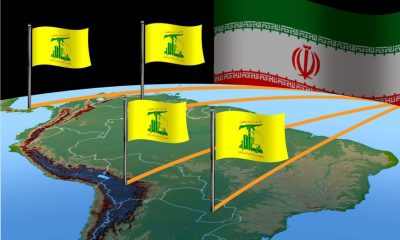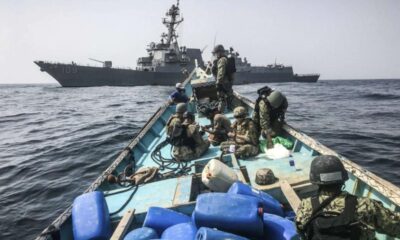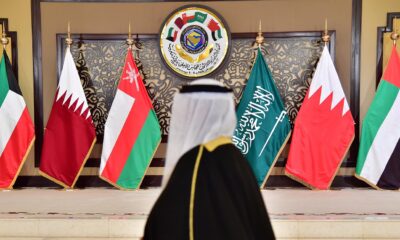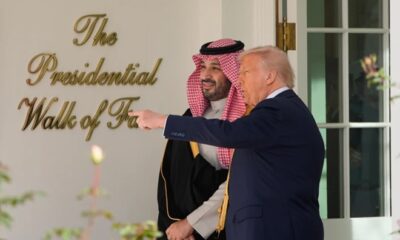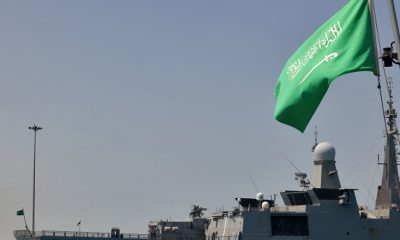Middle East
Inside Morgan Ortagus’s Mission to Break Hezbollah’s Grip on Lebanon

U.S. Deputy Special Presidential Envoy to the Middle East Morgan Ortagus arrived in Beirut on Monday with a mission that cuts deeper than diplomacy.
Officially, she’s there to discuss Lebanon’s “monopoly on weapons.” In reality, her visit marks Washington’s clearest signal yet: Hezbollah’s disarmament is back on the table.
Fresh from a two-day tour of Israel — including a stop at the northern border — Ortagus enters Lebanon at a moment of escalating Israeli strikes and rising uncertainty.
Over the past week, Israeli forces have intensified their air operations across southern Lebanon and the Bekaa Valley, reportedly killing 11 people, including at least eight Hezbollah fighters. Israeli media say the group has been hit more than 365 times since the November 2024 ceasefire.
According to Al Arabiya, Ortagus’s visit is tied to the upcoming ceasefire supervision committee meeting on Wednesday. But behind the official agenda lies a deadline-driven strategy.
U.S. officials, the outlet reports, want Lebanon to take “concrete measures” within weeks — not months — to curb Hezbollah’s military reach and open the door for direct negotiations with Israel.
Hezbollah, meanwhile, insists its weapons are non-negotiable. “We are the resistance, and we will remain the resistance,” declared Secretary-General Sheikh Naim Qassem, describing Israel’s current advantage as “temporary.”
His rhetoric, though defiant, underscores the group’s vulnerability after months of attrition.
For Israel, the calculus is clear. Defense Minister Israel Katz has vowed to “take all necessary measures” to protect the country’s northern communities, hinting at further operations if Hezbollah refuses to back down.
During Ortagus’s Israel visit, Katz briefed her on what officials describe as Hezbollah’s quiet effort to rebuild its southern infrastructure — a move Jerusalem sees as a provocation.
Lebanese President Joseph Aoun is expected to meet Ortagus first, with U.S. envoy Tom Barrack and newly appointed Ambassador Michel Issa set to follow in November.
Together, their visits mark a broader American effort to reshape Lebanon’s security landscape — and test whether Beirut is still capable of reining in a militia that acts as a state within a state.
The message is unmistakable: Washington’s patience with Hezbollah’s armed dominance is wearing thin.
As Israel pushes harder and Lebanon’s sovereignty hangs in the balance, Ortagus’s visit signals not just pressure — but the possibility of a reckoning.
Middle East
Houthis Break Away From Iran, Shaking the Axis of Resistance

Iran’s long-standing strategy of projecting power through regional proxy forces is facing an unexpected strain, as senior Iranian officials acknowledge that the Houthis in Yemen have become increasingly difficult to control and, in some cases, openly defiant.
The revelations, reported by The Telegraph, suggest Tehran is struggling to manage what remains of its once-cohesive “axis of resistance.”
According to a senior Iranian official quoted in the report, the Houthis “have gone rogue” and “do not listen to Tehran as much as they used to.” The official said the breakdown extends beyond Yemen, noting that certain Iranian-backed militias in Iraq are also ignoring directives: “Some groups are acting as if we never had any contact with them.”
The internal frustration highlights a shift that began in April, when tensions rose after Iran failed to respond to heavy U.S. airstrikes targeting Houthi positions.
The lack of retaliation angered Houthi commanders, who had expected Tehran to defend its closest remaining proxy following the collapse of Hamas’ operations in Gaza and the decimation of Hezbollah’s leadership in Lebanon under sustained Israeli military pressure.
Tehran has attempted to reassert control. A senior IRGC commander was recently sent to Sanaa, and Quds Force officer Abdolreza Shahlaei — a high-value U.S. target with a $15 million bounty on his head — has reportedly been redeployed to Yemen to press the group back into alignment. But Iranian officials told The Telegraph that these efforts have yet to succeed.
Iranian influence faltered further as the Houthis tightened their grip on northern Yemen, expanded missile and drone capabilities, and diversified revenue streams.
The group now runs an extensive network that includes tax collection, aid diversion, drug and arms trafficking, and disruptive operations along key Red Sea shipping routes. Its mountainous hideouts continue to shield equipment despite years of U.S. and allied airstrikes, estimated to have cost more than $7 billion.
Former Yemeni diplomat Mahmoud Shehrah told The Telegraph that the Houthi movement is driven primarily by its own ideology rather than external direction. “The Houthis don’t need someone to encourage them.
This is about their beliefs,” he said, emphasizing that the group maintains its own political and religious framework even as coordination with Tehran persists.
Internal reports cited by regional analysts describe rising tensions inside the Houthi leadership itself, with IRGC advisers unable to reconcile factional disputes or strategic disagreements.
The Defense Line report described the Houthis as facing “a crisis of options and priorities,” adding that the group’s behavior increasingly mirrors “the confusion that exists in Tehran.”
Analysts suggest that while Iran and the Houthis share strategic interests — including pressuring U.S. partners and complicating maritime security — their goals are no longer perfectly aligned.
Dr. Bader al-Saif of the University of Kuwait likened the relationship to a franchise model: “Both Iran and the Houthis benefit from working together, but they also have divergent interests. They’ll pursue those interests whenever they see fit.”
The growing disconnect raises new questions about the future of Iran’s regional influence. A network once defined by ideological cohesion and coordinated action now shows signs of fragmentation — at a moment when Tehran is increasingly isolated diplomatically and under pressure from intensified U.S. and regional military operations.
Middle East
Saudi Crown Prince Rejects Trump Request to Advance Normalization With Israel

Saudi Crown Prince Mohammed bin Salman declined a direct request from President Donald Trump to advance toward normalization with Israel during their White House summit last month, according to U.S. officials familiar with the talks.
The exchange, first reported by Axios, underscores the limits of Washington’s push to expand the Abraham Accords at a moment when the Middle East remains deeply fractured and the Israeli–Palestinian conflict unresolved.
The officials said Trump pressed the Crown Prince repeatedly on joining the regional normalization framework, prompting what they described as a “tense” back-and-forth.
Saudi Arabia’s position, however, did not shift. According to the report, Mohammed bin Salman reiterated that normalization is impossible without a comprehensive political agreement establishing a Palestinian state based on the 1967 borders, with East Jerusalem as its capital — a stance Riyadh has maintained for more than two decades.
“The Crown Prince dealt firmly with Trump’s request and held fast to his position,” Axios wrote, quoting two U.S. officials who described Mohammed bin Salman as a “strong leader” in the discussion.
The meeting took place on Nov. 18 during the Crown Prince’s official visit to Washington, a trip framed by both governments as a strategic recommitment to bilateral ties. While the White House offered an exceptionally warm reception, the normalization issue remains one of the sharpest points of divergence between the two leaders.
At a press conference following the talks, Mohammed bin Salman publicly reaffirmed the Kingdom’s longstanding conditions for peace with Israel, emphasizing that Saudi Arabia supports regional stability but will not move forward without what he called a “clear and credible plan” for a two-state solution.
Riyadh has consistently argued that a just settlement for the Palestinians is the foundation for any broader regional peace.
The Kingdom has also positioned itself as a central mediator in regional diplomacy, insisting that political dialogue — rather than unilateral agreements — offers the only sustainable path to resolving the Middle East’s long-running conflicts.
The report suggests that while Trump seeks a diplomatic breakthrough that could reshape the region, Saudi Arabia’s leadership remains unwilling to break with its principle: no normalization without Palestinian statehood.
Middle East
Trump Defends MBS, Dismisses Khashoggi Findings in Stunning Oval Office Moment

President Donald Trump on Tuesday dismissed long-standing U.S. intelligence assessments that Saudi Crown Prince Mohammed bin Salman was likely aware of the 2018 killing of Washington Post journalist Jamal Khashoggi, offering an emphatic public embrace of the Saudi leader during his first visit to the White House in seven years.
The meeting underscored how dramatically the U.S.–Saudi relationship has shifted since the fallout over Khashoggi’s assassination. What once prompted global condemnation and strained bilateral ties has now given way to renewed political warmth, a slate of new defense agreements, and an expanded Saudi investment pledge that Trump hailed as “historic.”
Standing beside the crown prince in the Oval Office, Trump dismissed questions about Khashoggi’s killing as inappropriate and reiterated his belief that Mohammed bin Salman had no advance knowledge of the operation, despite U.S. intelligence findings declassified in 2021 that concluded otherwise.
“Whether you liked him or didn’t like him, things happen,” Trump said. “But he knew nothing about it. And we can leave it at that.”
The crown prince described the killing as a “painful” and “huge mistake,” offering no new details about Saudi Arabia’s internal handling of the case but insisting his government had taken “all the right steps.”
The White House used the visit to announce a series of high-profile deals. Trump designated Saudi Arabia a major non-NATO ally, formalized an agreement for the kingdom to purchase F-35 stealth fighter jets and nearly 300 U.S. tanks, and unveiled new cooperation initiatives on capital markets, mineral supply chains, and counter-terrorism financing.
Saudi Arabia, in turn, said it would increase its planned investment in the United States to $1 trillion—up from $600 billion previously pledged.
The summit, framed by a military flyover and a formal black-tie dinner attended by prominent business figures including Elon Musk and Nvidia CEO Jensen Huang, marked a clear re-alignment of priorities for a president who sees Saudi cooperation as pivotal to a broader regional agenda that includes expanding the Abraham Accords.
But the meeting also drew sharp criticism. Human rights advocates accused Trump of overlooking repression in the kingdom, citing a surge in executions and continued arrests of activists and journalists.
They also raised concerns about potential conflicts of interest involving Trump family business projects in Saudi Arabia.
Inside the administration, the F-35 sale has prompted internal debate. U.S. law requires Washington to preserve Israel’s qualitative military edge in the region, and intelligence officials remain wary of advanced American technology potentially reaching China through deepening Saudi-Chinese military cooperation.
For now, however, Trump appears determined to advance the U.S.–Saudi partnership while encouraging Riyadh to move closer to diplomatic normalization with Israel—a step the crown prince said remains conditional on progress toward a Palestinian state.
“We want to be part of the Abraham Accords,” Mohammed bin Salman said, “but only with a clear path toward a two-state solution.”
Middle East
Trump Backs al-Sharaa, Signals New U.S.–Syria Alliance

President Donald Trump pledged strong U.S. support for Syria’s new leadership on Monday after hosting Syrian President Ahmad al-Sharaa at the White House — the first visit by a Syrian head of state since the country’s independence in 1946.
The unexpected Oval Office meeting, closed to reporters, underscored Washington’s rapid shift in posture toward Damascus following the fall of Bashar al-Assad last December.
Al-Sharaa, who emerged as interim leader after rebel forces seized control of the capital, entered the building through a secure side access point rather than the traditional ceremonial driveway used for foreign visitors.
He departed two hours later, briefly greeting cheering supporters before leaving in his motorcade.
“We’ll do everything we can to make Syria successful,” Trump said afterward, telling reporters he had “confidence” in al-Sharaa’s ability to lead the country through its post-Assad transition.
In a post on social media, Trump added that he expects additional meetings with the new Syrian president.
During the visit, Syria formally joined the U.S.-led global coalition against the Islamic State group, becoming its 90th member, according to a senior administration official.
The United States will also allow Syria to reopen its embassy in Washington — closed for more than a decade — to improve coordination on counterterrorism, security, and economic policy.
Syria’s Foreign Ministry described the talks as “friendly and constructive,” saying Trump reaffirmed U.S. readiness to support reconstruction and development.
In a Fox News interview, al-Sharaa said he discussed future investment opportunities and emphasized his goal of rebranding Syria as a geopolitical partner rather than a security risk, pointing specifically to U.S. interest in the country’s gas sector.
Al-Sharaa also pressed the administration for a permanent repeal of U.S. sanctions imposed during the Assad era. While Trump has temporarily waived the restrictions under the Caesar Act, lifting them outright would require congressional approval.
Two competing proposals are already emerging on Capitol Hill. Sen. Jeanne Shaheen (D-N.H.), the top Democrat on the Senate Foreign Relations Committee, has drafted legislation calling for full, unconditional repeal.
Sen. Lindsey Graham (R-S.C.), a close Trump ally, supports an alternate plan to lift sanctions but review the decision every six months.
Advocates warn that any conditional or temporary repeal would deter investors. Mouaz Moustafa, executive director of the Syrian Emergency Task Force, compared such an arrangement to a “hanging shadow that paralyses any initiatives for our country.”
The Treasury Department confirmed Monday that the Caesar Act waiver has been extended for another 180 days, keeping the sanctions frozen while Washington and Damascus negotiate the next phase of the bilateral relationship.
Commentary
The Secret Route Restoring Iran’s Global Reach

A340s, 777s and Forged Papers: Inside the Plot to Replenish Iran’s Fleet.
A fresh sanctions-evasion pathway has opened from Africa to Tehran, aviation researchers and open-source investigators warn, after Malawian front companies began re-registering wide- and narrow-body jets bound for Iran.
The transfers mirror a larger, adaptive campaign by Mahan Air — an Iranian carrier long linked to the Islamic Revolutionary Guard Corps — to rebuild long-haul capacity in the face of U.S. export controls.
A chronology of flights and registry entries reviewed by investigators shows Malawi-registered airframes appearing in Asia before small, clandestine movements toward Iran.
The pattern follows the July 2025 “Triple Seven” operation through Madagascar, in which five ex-Singapore Airlines Boeing 777-212ERs were routed through multiple countries using forged Malagasy registrations.
That scandal prompted arrests in Madagascar and the suspension of a civil-aviation official, but experts say Tehran’s logisticians quickly shifted tactics.
Between mid-2024 and mid-2025, Malawian shell operators acquired records for several aircraft types — including Boeing 737s, Airbus A320s and the four-engine Airbus A340-642 — that investigators say were refurbished in China and later prepared for clandestine transfer to Iran.
In at least three cases, jets sold for dismantling in 2022 were instead returned to service and painted with Malawian registration codes while stored at Taiyuan Wusu International Airport, according to satellite imagery and photographic evidence examined by open-source analysts.
The aircraft are valuable for reasons beyond passenger service. The A340-642, despite its age, uses Rolls-Royce Trent 556 engines whose spare-parts lines are more accessible to Iranian technicians than the primarily U.S.-made engines on more modern jets.
Investigators say that capability, combined with the A340’s range and cargo capacity, makes it an attractive platform for mixed passenger-freight missions that can support long-distance logistics — a capability Tehran has used for years.
Analysts say the Malawi shift exposes broader weaknesses in international aviation oversight. “Where one permissive registry is closed, another can appear,” said an aviation compliance expert who reviewed the materials.
Wealthier states and established registries have more robust end-user checks; smaller states with limited technical capacity and acute financing needs are often vulnerable to opaque transactions and political pressure, the expert added.
The U.S. response to the Madagascar affair — a coordinated probe by the FBI and sanctions on complicit actors — demonstrated that enforcement can work.
Washington and allies now face a fresh policy choice: replicate that model in Lilongwe and other jurisdictions, or watch Iran’s procurement networks adapt again.
The report urges Treasury’s Office of Foreign Assets Control, the State Department and international civil aviation authorities to press Malawi for transparency, suspend suspect air operator certificates and trace beneficial ownership of the shell companies involved.
If left unchecked, investigators warn, the incremental restoration of Iran’s long-range airlift would erode the effectiveness of export controls by adding capability one aircraft at a time — a slow-moving attrition of sanctions that would be difficult to reverse.
Middle East
Saudi Signals Quiet Opening to Israel Ahead of Trump–MBS Summit

Saudi Arabia is preparing to cautiously restore indirect communication channels with Israel through Washington, a senior source within the Saudi royal family told Israel’s Kan News on Saturday — a move signaling that Riyadh may once again test the waters of normalization, even as the region remains deeply fractured by the aftermath of the October 7 attacks and the Gaza war.
The remarks come just days before Crown Prince Mohammed bin Salman travels to Washington for a high-stakes meeting with U.S. President Donald Trump, the first such encounter since Trump returned to the White House.
According to the Saudi source, the Crown Prince expects to revisit the quiet, U.S.-mediated contact that existed between Riyadh and Jerusalem before the October 7 massacre derailed talks and hardened regional positions.
Saudi officials described the goal of the upcoming discussions as an effort to “thaw the ice” — reopening channels for strategic dialogue and attempting to bridge gaps that widened during Israel’s war against Hamas.
But they were equally clear about the limits: no normalization without a credible, binding path toward a two-state agreement between Israel and the Palestinians.
That condition has remained the cornerstone of Riyadh’s diplomatic posture even as several Arab and Muslim-majority states have moved toward formal ties with Israel under the Abraham Accords framework.
A Boost From Kazakhstan
The Saudi assessment was buoyed by Kazakhstan’s surprise entry into the Abraham Accords last week.
The Central Asian nation formally joined the U.S.-brokered normalization bloc during a three-way call between Trump, Israeli Prime Minister Benjamin Netanyahu, and Kazakh President Kassym-Jomart Tokayev.
Trump hailed the decision as the “first of many” new signatories expected during his second term, describing it as a milestone in expanding political and economic bridges “across the world.”
For Riyadh, Kazakhstan’s move is seen as a positive signal that regional and global states remain open to new diplomatic architectures — even amid the Middle East’s most severe crisis in decades.
Normalization Still Far Away, But the Path Is Reopening
Saudi officials cautioned that a breakthrough with Israel is not imminent and will depend entirely on changes in Israeli-Palestinian diplomacy.
But the willingness to restore indirect U.S.-mediated communication represents a notable shift after a year of silence, cross-border escalation, and political hostility.
With MBS heading to Washington and Trump eager to expand his signature Abraham Accords, the next 10 days may quietly define the future of Middle East realignment — and determine whether Ramadan 2026 begins with a pathway to normalization or another diplomatic dead end.
Middle East
The Illusion of Diplomacy: Washington’s Dangerous Calculus with Tehran

The resumption of high-level talks between Washington and Tehran, framed publicly as a necessary de-escalation effort, is increasingly being viewed by seasoned regional observers as a strategic miscalculation with profound implications for allied security.
This latest diplomatic initiative risks projecting an illusion of stability while, in reality, creating a perverse incentive structure for malign actors across the Middle East.
At its core, the policy reflects a short-term political preference in Washington to mitigate domestic friction at the expense of a coherent, long-term geopolitical strategy.
This pursuit of temporary calm directly undermines the foundational principles of deterrence. By engaging under the current conditions—conditions often engineered through proxy escalation—the United States appears to be rewarding tactical provocation.
The danger here is not merely a negotiation lapse; it is the systemic erosion of confidence among key regional partners who rely on American resolve.
For allies like Israel, this dynamic presents an acute strategic dilemma. The perception is growing that Washington is accepting a new, more aggressive Iranian baseline, effectively ceding strategic ground and leaving indispensable partners increasingly exposed.
The human cost of this strategic ambiguity is often borne out in rising regional tensions and a greater necessity for unilateral action by threatened states.
In the complex calculus of the modern Middle East, the failure to clearly delineate and defend established red lines is never interpreted as a gesture of goodwill. It is understood, rather, as a retreat.
The challenge for Washington is to recognize that genuine stability is achieved not through compromise with those who fundamentally reject the status quo, but through the clear and unwavering defense of allies whose stability underpins the entire strategic balance.
Until this core principle is restored, this “diplomacy” will be interpreted as a failure of nerve, not a triumph of statesmanship.
Analysis
Saudi and Iran’s Beijing Pact Signals the End of America’s Regional Era

On March 10th, the geopolitical map of the Middle East quietly but irreversibly shifted.
In a hotel conference room in Beijing — far from Washington’s watchful eye — Saudi and Iranian diplomats shook hands under Chinese mediation, marking a moment that symbolized the end of an era: the age of uncontested U.S. dominance in the Middle East.
The China-brokered Saudi–Iran deal did more than reestablish diplomatic ties; it announced Beijing’s arrival as a credible power broker in a region long defined by American might.
While the details of the agreement remain thin, its symbolism is thick with meaning — and its message unmistakable. The global order is no longer U.S.-centric.
The Middle East, once Washington’s chessboard, now plays by multipolar rules.
Beijing’s Quiet Revolution
China’s foray into Middle Eastern diplomacy was not about ideology, democracy, or human rights — the language of Washington — but about trade routes, ports, oil, and political leverage built on economic gravity.
Unlike the U.S., China doesn’t moralize. It invests, builds, and stays quiet.
For Beijing, both Saudi Arabia and Iran are energy lifelines — key suppliers and potential partners in its Belt and Road Initiative.
Their reconciliation helps stabilize China’s energy corridors and signals a strategic alternative to Western dependency.
This is not China trying to replace the United States militarily — it is replacing it economically, one deal at a time.
The more Washington demands its allies “decouple” from Beijing, the more those same allies — from Riyadh to Cairo — quietly pivot eastward.
Saudi Arabia’s Power Play
For Crown Prince Mohammed bin Salman, this deal was personal. He’s tired of American lectures and unpredictable presidents. His Vision 2030 depends on stability, investment, and leverage — not on military confrontation.
His war in Yemen exposed the limits of force; now he’s using diplomacy as the new weapon.
By reopening ties with Tehran under China’s patronage, Riyadh signals a strategic independence unseen in modern Saudi history.
No longer content to be Washington’s junior partner, the kingdom is now testing a “nonaligned” posture: open to the U.S., cooperative with China, and pragmatic with Iran — a balancing act designed to make Saudi Arabia indispensable to everyone.
Tehran’s Desperate Reset
For Iran, the motivation is survival. Years of sanctions, economic suffocation, and global isolation have left Tehran cornered. Its alliance with Russia over Ukraine deepened its pariah status, and domestic unrest further exposed its fragility.
Reconciliation with Saudi Arabia — even if temporary — gives Iran room to breathe. It opens trade doors, legitimizes its diplomacy, and possibly eases its regional isolation.
Iran is not reforming; it’s repositioning — leveraging China’s shield to resist U.S. containment.
A Region Rearranging Itself
From Cairo to Doha, Ankara to Abu Dhabi, Middle Eastern capitals are recalibrating. Enemies are becoming partners, and old rivals are rediscovering the value of stability.
Egypt and Turkey have reopened dialogue. Qatar and Saudi Arabia buried their feud.
Everywhere, economic pragmatism trumps ideological divisions. The U.S.-led “peace through pressure” model is being replaced by “peace through profit.”
A New Order, Not of Washington’s Making
The Middle East is no longer choosing between East and West — it’s choosing both, on its own terms. The “rules-based international order” still exists, but the rulemakers are multiplying.
The new order is transactional, not ideological — built on sovereignty, self-interest, and strategic ambiguity.
Washington once set the rules. Beijing just reminded the world that rules can be rewritten.
-

 Analysis9 months ago
Analysis9 months agoSaudi Arabia’s Billion-Dollar Bid for Eritrea’s Assab Port
-
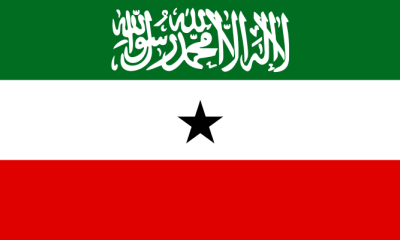
 Opinion17 years ago
Opinion17 years agoSomaliland Needs a Paradigm Change: Now or Never!
-
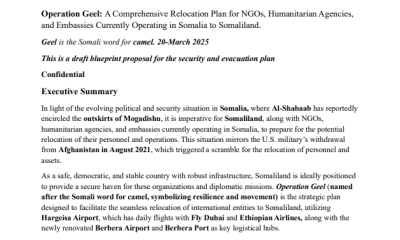
 ASSESSMENTS8 months ago
ASSESSMENTS8 months agoOperation Geel Exposes the Truth: International Community’s Reluctance to Embrace Somaliland as a Strategic Ally
-

 Somaliland10 months ago
Somaliland10 months agoSomaliland and UAE Elevate Ties to Comprehensive Strategic Partnership
-

 Africa2 years ago
Africa2 years agoHow Somaliland Could Lead the Global Camel Milk Industry
-

 Analysis7 months ago
Analysis7 months agoFrom Cell to Summit: The Prisoner Who Became Syria’s President
-
Analysis8 months ago
How an Israeli Strike on Iran’s Nuclear Program Could Play Out
-
Analysis2 years ago
Iran escalates conflict, attacking Israel; US forces help Israel to intercept Iranian projectiles


